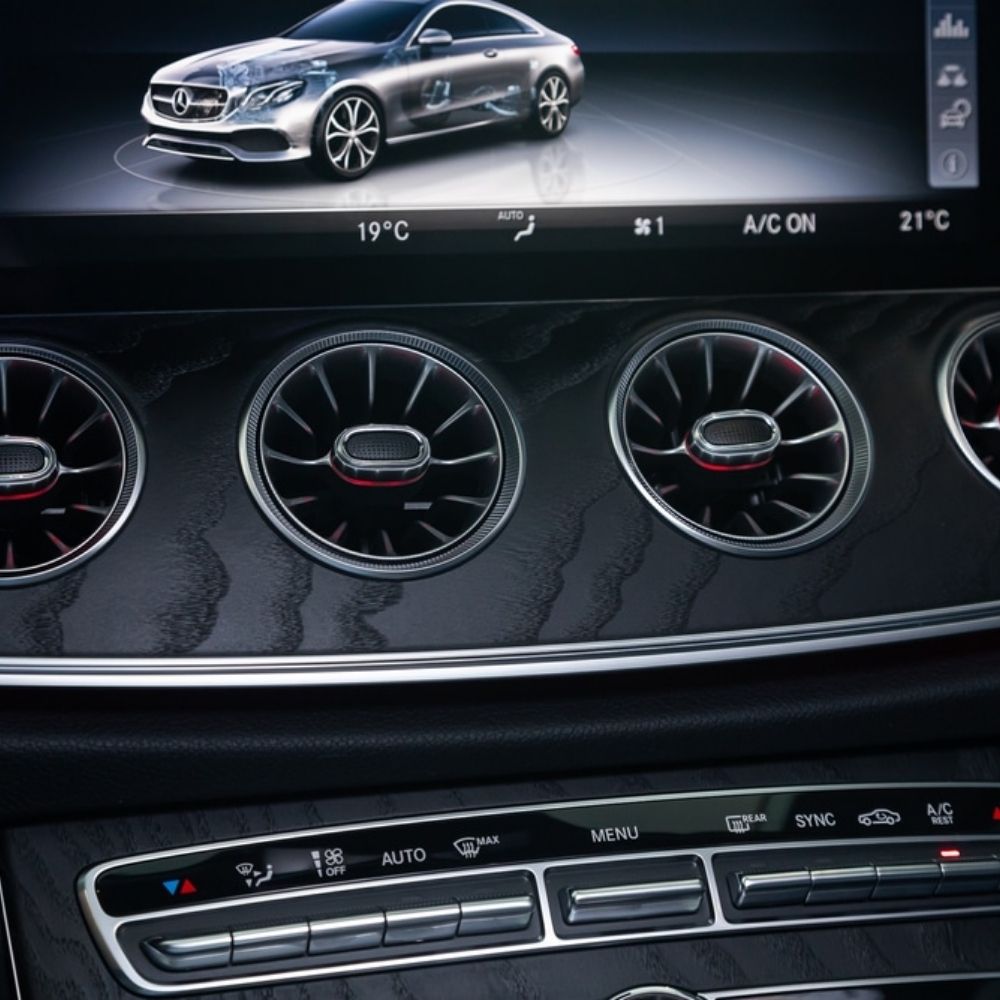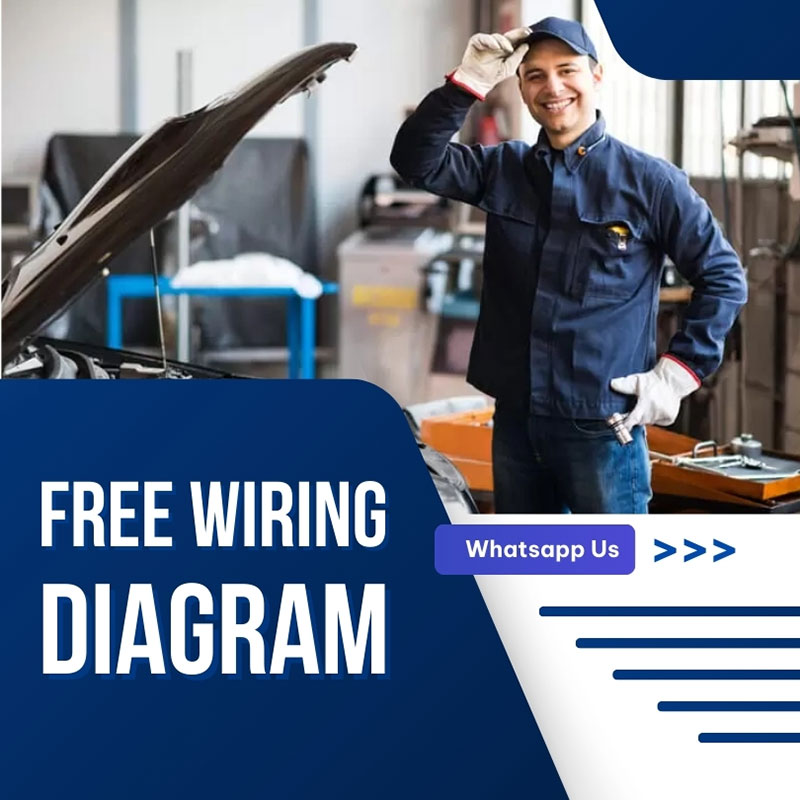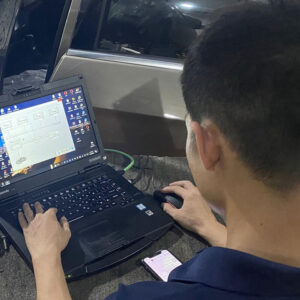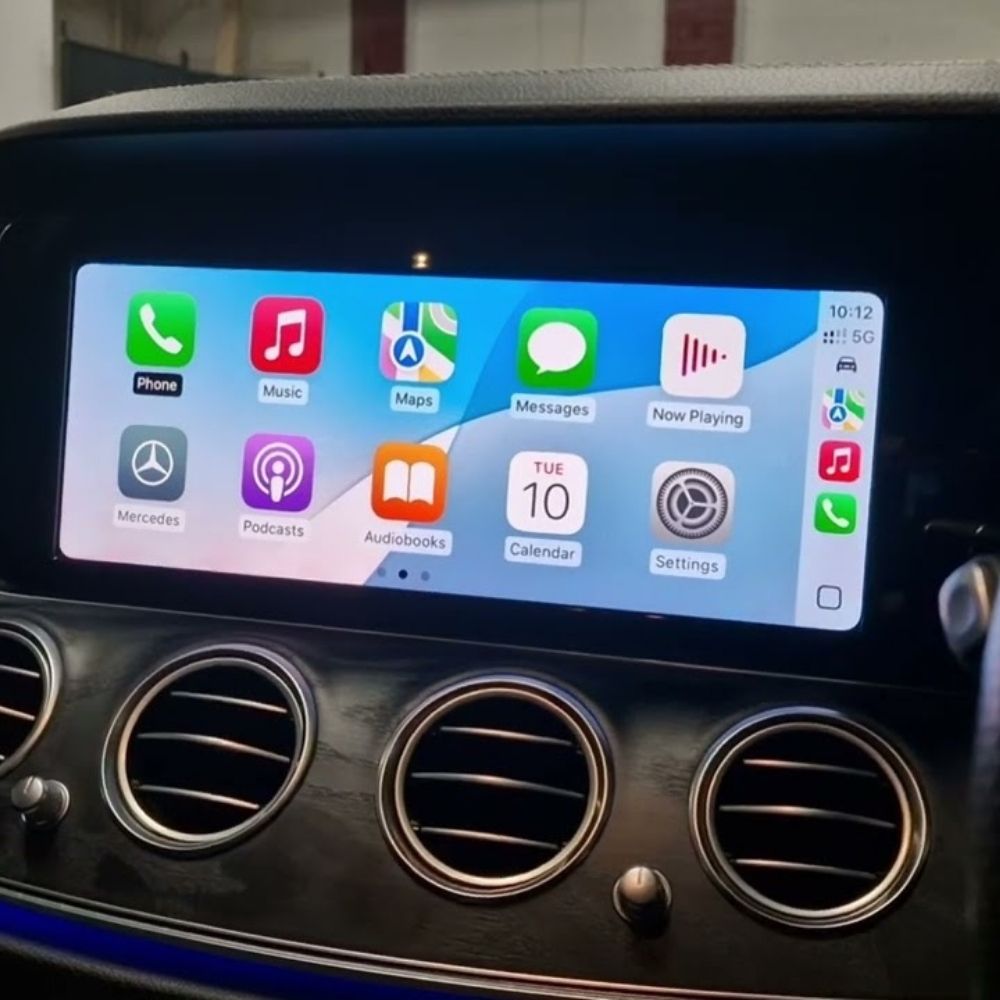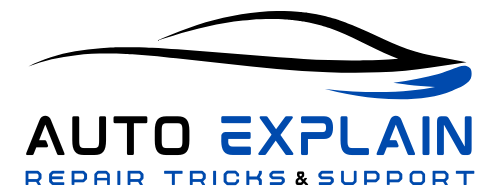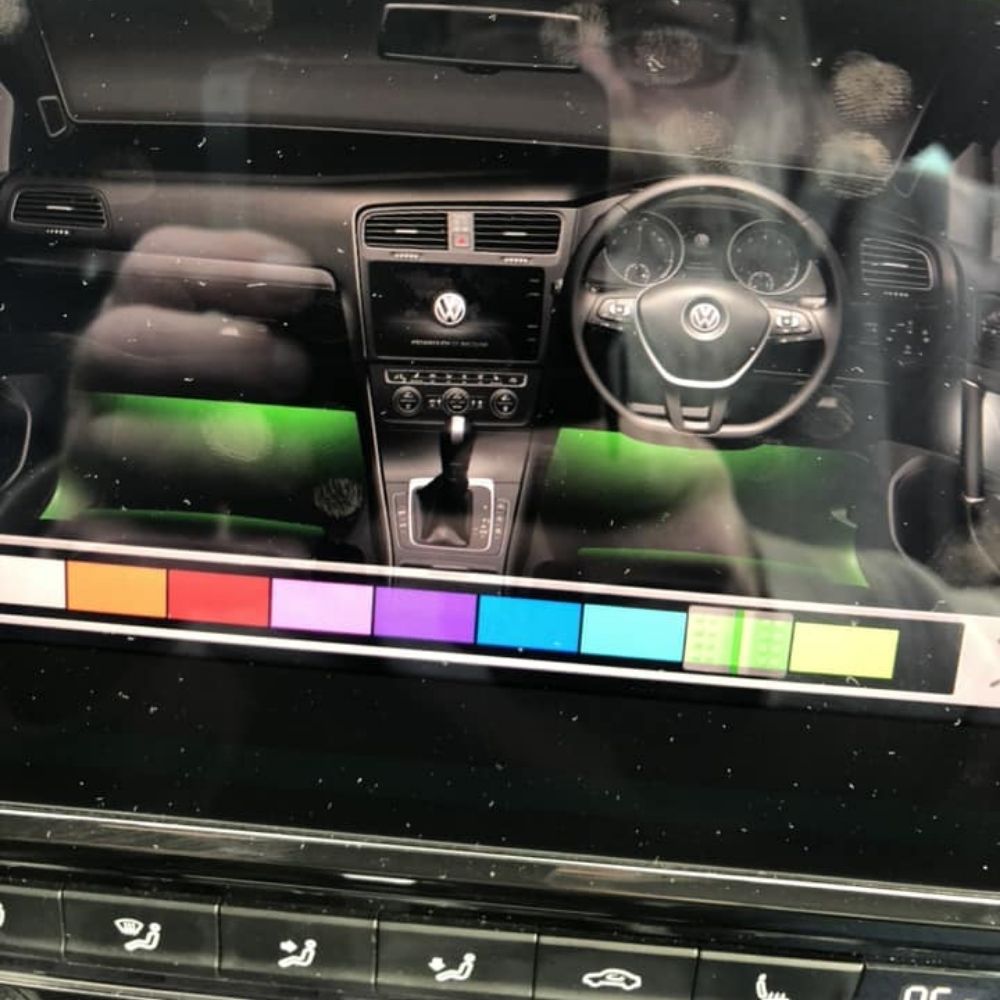
**What Does Audi A3 Trouble Code U101400 Actually Mean?**
Contents
- 1. Understanding the Audi A3 U101400 Trouble Code
- 2. Common Causes of Audi A3 Trouble Code U101400
- 3. Identifying User Search Intent
- 4. Diagnostic Steps for Audi A3 Trouble Code U101400
- 5. Tools Needed for Diagnosis
- 6. Step-by-Step Troubleshooting Guide
- 7. Addressing Wiring and Connection Issues
- 8. Diagnosing and Repairing Faulty Control Modules
- 9. The Role of Software Updates
- 10. CAN Bus Diagnostics in Depth
- 11. Common Mistakes to Avoid
- 12. Advanced Diagnostic Techniques
- 13. When to Seek Professional Help
- 14. AutoExplain.com: Your Partner in Automotive Diagnostics
- 15. Benefits of Remote Diagnostic Services
- 16. Real-World Examples and Case Studies
- 17. Preventing Future Issues
- 18. Addressing Specific Modules: ECU, TCM, BCM, ABS, AdBlue
- 19. Utilizing Wiring Diagrams
- 20. How to Use an Oscilloscope for CAN Bus Diagnostics
- 21. Advanced Coding and Programming
- 22. Staying Updated with the Latest Information
- 23. Case Studies of Successful Repairs
- 24. Addressing Intermittent Issues
- 25. The Future of Automotive Diagnostics
- 26. FAQ about Audi A3 Trouble Code U101400
- 27. Conclusion
The Audi A3 Trouble Code U101400 indicates a communication error within the vehicle’s network. This article explores the potential causes, diagnostic steps, and solutions for resolving this issue, and highlights how AutoExplain.com can help you navigate this complex problem.
1. Understanding the Audi A3 U101400 Trouble Code
The Audi A3 U101400 trouble code signifies a communication fault within the vehicle’s Controller Area Network (CAN) bus system. It is often related to control module issues such as ECU, TCM, BCM, ABS, and AdBlue. Here’s a detailed breakdown:
- Definition: U101400 means “Function Restriction due to Missing Message.” This indicates that one or more control modules in the vehicle are not receiving the necessary data from another module.
- System: CAN bus, the backbone for communication between electronic control units (ECUs) in modern vehicles.
- Impact: Reduced functionality, warning lights, and potential drivability issues.
Understanding the basics helps in identifying the subsequent course of action.
2. Common Causes of Audi A3 Trouble Code U101400
Identifying the root cause of the U101400 code is essential for effective repair. Some common causes include:
- Faulty Control Modules: Damaged or malfunctioning ECUs, TCMs, BCMs, ABS modules, or AdBlue systems.
- Wiring Issues: Damaged, corroded, or loose wiring harnesses and connectors.
- CAN Bus Problems: Issues within the CAN bus network, such as a short circuit or open circuit.
- Software Glitches: Outdated or corrupted software in one or more control modules.
- Power Supply Issues: Insufficient or unstable power supply to the control modules.
Pinpointing the exact reason will guide the subsequent steps in the troubleshooting process.
3. Identifying User Search Intent
To better address user needs, here are five potential search intents related to the “audi a3 trouble code u101400” keyword:
- Troubleshooting Guide: Users seek a step-by-step guide to diagnose and fix the U101400 error.
- Definition: Users want to understand what the U101400 code means and its potential implications.
- Causes: Users are looking for a list of possible causes for the U101400 error.
- Solutions: Users need proven solutions to resolve the U101400 code.
- Professional Help: Users are searching for expert assistance, such as remote diagnostic services.
4. Diagnostic Steps for Audi A3 Trouble Code U101400
A systematic diagnostic approach is crucial for accurately identifying and resolving the U101400 error.
- Initial Scan: Use an OBD-II scanner to confirm the presence of the U101400 code and check for any related codes.
- Visual Inspection: Check all wiring harnesses and connectors associated with the CAN bus system for damage, corrosion, or loose connections.
- Module Verification: Inspect the ECUs, TCMs, BCMs, ABS modules, and AdBlue systems for physical damage or corrosion.
- CAN Bus Testing: Use a multimeter or oscilloscope to test the CAN bus voltage and signal integrity.
- Software Check: Verify that all control modules have the latest software updates.
5. Tools Needed for Diagnosis
Having the right tools can significantly streamline the diagnostic process. Essential tools include:
- OBD-II Scanner: For reading and clearing trouble codes.
- Multimeter: For testing voltage, continuity, and resistance in electrical circuits.
- Oscilloscope: For analyzing CAN bus signal waveforms.
- Wiring Diagrams: For understanding the electrical layout of the vehicle.
- Specialized Diagnostic Software: Such as VCDS or ODIS, for advanced diagnostics and programming.
- Basic Hand Tools: Such as wrenches, sockets, and screwdrivers.
6. Step-by-Step Troubleshooting Guide
Here’s a detailed guide to troubleshoot the U101400 code:
- Connect the OBD-II Scanner: Plug the scanner into the OBD-II port and read all stored trouble codes. Note down all codes present.
- Inspect Wiring and Connectors: Visually inspect all wiring harnesses and connectors related to the CAN bus system. Look for signs of damage, corrosion, or looseness.
- Check Module Connections: Ensure that all control modules (ECU, TCM, BCM, ABS, AdBlue) are properly connected and free from corrosion.
- Test CAN Bus Voltage: Use a multimeter to test the voltage on the CAN bus wires. Typically, the voltage should be around 2.5V with the ignition off and fluctuate between 2.5V and 3.5V with the ignition on.
- Examine CAN Bus Signals: Use an oscilloscope to examine the CAN bus signal waveforms. Look for any abnormalities, such as missing signals or distorted waveforms.
- Update Software: Check for software updates for all control modules. Use specialized diagnostic software (e.g., VCDS, ODIS) to update the software if necessary.
- Clear Trouble Codes: After performing the necessary repairs, clear the trouble codes using the OBD-II scanner and retest the system.
7. Addressing Wiring and Connection Issues
Faulty wiring and connections are common culprits behind the U101400 code. Follow these steps to address these issues:
- Visual Inspection: Examine all wiring harnesses and connectors for signs of damage, corrosion, or looseness.
- Continuity Testing: Use a multimeter to perform continuity tests on all relevant wires.
- Repair or Replace: Repair any damaged wires or replace faulty connectors.
- Secure Connections: Ensure all connections are secure and properly seated.
- Apply Dielectric Grease: Apply dielectric grease to the connectors to prevent corrosion.
8. Diagnosing and Repairing Faulty Control Modules
If wiring and connections are intact, the next step is to diagnose the control modules themselves.
- Module-Specific Tests: Perform module-specific tests using specialized diagnostic software.
- Check for Internal Faults: Look for any internal faults or error messages related to the control modules.
- Software Verification: Verify that the software on each module is up to date.
- Module Replacement: If a module is found to be faulty, replace it with a new or refurbished unit.
- Programming/Coding: After replacing a module, it may need to be programmed or coded to match the vehicle’s configuration.
9. The Role of Software Updates
Outdated or corrupted software can cause communication issues within the CAN bus network. Keeping the software up to date is essential.
- Check for Updates: Use specialized diagnostic software to check for available software updates for all control modules.
- Follow Procedures: Follow the manufacturer’s recommended procedures for performing software updates.
- Ensure Stable Power: Ensure a stable power supply during the update process to prevent interruptions.
- Verify Installation: Verify that the software updates have been installed correctly.
- Retest System: After updating the software, retest the system to ensure that the U101400 code has been resolved.
10. CAN Bus Diagnostics in Depth
The CAN bus is the central nervous system of the vehicle’s electronics. Diagnosing CAN bus issues requires a thorough understanding of its operation.
- Voltage Checks: Use a multimeter to check the voltage on the CAN high and CAN low wires.
- Signal Integrity: Use an oscilloscope to examine the CAN bus signal waveforms.
- Termination Resistors: Check the termination resistors at the ends of the CAN bus network.
- Shorts and Opens: Look for shorts to ground, shorts to power, or open circuits in the CAN bus wiring.
- Module Isolation: Disconnect modules one at a time to isolate the source of the problem.
11. Common Mistakes to Avoid
When troubleshooting the U101400 code, avoid these common mistakes:
- Ignoring Basic Checks: Overlooking basic checks such as visual inspection of wiring and connections.
- Skipping Software Updates: Failing to check for and install available software updates.
- Not Following Procedures: Not following the manufacturer’s recommended diagnostic procedures.
- Replacing Parts Unnecessarily: Replacing parts without proper diagnosis.
- Ignoring Related Codes: Ignoring other trouble codes that may be related to the U101400 code.
12. Advanced Diagnostic Techniques
For complex cases, advanced diagnostic techniques may be required:
- Network Analysis: Use specialized diagnostic tools to analyze the CAN bus network traffic.
- Data Logging: Log data from various control modules to identify communication issues.
- Module Simulation: Simulate the signals from a control module to test the functionality of other modules.
- Expert Consultation: Consult with experienced technicians or specialists for assistance.
13. When to Seek Professional Help
While many issues can be resolved with careful troubleshooting, sometimes professional help is necessary:
- Complex Issues: When the problem is complex or difficult to diagnose.
- Lack of Experience: When you lack the experience or knowledge to perform the necessary repairs.
- Specialized Tools: When you don’t have access to the specialized tools or software required.
- Time Constraints: When you don’t have the time to perform the necessary repairs.
- Uncertainty: When you are unsure about the best course of action.
14. AutoExplain.com: Your Partner in Automotive Diagnostics
AutoExplain.com offers expert remote diagnostic services to help you resolve complex automotive issues quickly and efficiently. We provide:
- Remote Diagnostics: Our experienced technicians can remotely diagnose your vehicle using advanced diagnostic tools.
- Step-by-Step Guidance: We provide step-by-step guidance to help you perform the necessary repairs.
- Software Updates: We can assist with software updates and programming for various control modules.
- Expert Support: Our team of experts is available to answer your questions and provide support.
- Time and Cost Savings: Our remote diagnostic services can save you time and money compared to traditional repair shops.
15. Benefits of Remote Diagnostic Services
Remote diagnostic services offer several advantages over traditional repair shops:
- Convenience: Get your vehicle diagnosed from the comfort of your own garage.
- Speed: Resolve issues quickly without having to wait for an appointment at a repair shop.
- Cost-Effective: Save money on towing fees and expensive diagnostic charges.
- Expertise: Access the expertise of experienced technicians and specialists.
- Support: Get ongoing support and guidance throughout the repair process.
16. Real-World Examples and Case Studies
Here are a couple of real-world examples to illustrate how the U101400 code can manifest:
- Case Study 1: A technician encountered the U101400 code on an Audi A3 after a battery replacement. The issue was traced to a corrupted ECU software. After updating the software using ODIS, the problem was resolved.
- Case Study 2: An owner reported intermittent warning lights and drivability issues. The U101400 code was present. Upon inspection, a corroded CAN bus connector was found. Cleaning and reseating the connector fixed the problem.
17. Preventing Future Issues
Preventive maintenance can help avoid future occurrences of the U101400 code:
- Regular Inspections: Perform regular inspections of wiring harnesses and connectors.
- Clean Connections: Keep electrical connections clean and free from corrosion.
- Software Updates: Stay up-to-date with software updates for all control modules.
- Battery Maintenance: Maintain a healthy battery to ensure a stable power supply.
- Proper Repairs: Ensure that all repairs are performed correctly and according to the manufacturer’s specifications.
18. Addressing Specific Modules: ECU, TCM, BCM, ABS, AdBlue
Different modules require specific attention when troubleshooting the U101400 code:
- ECU (Engine Control Unit): Verify proper programming and software versions. Check for physical damage or corrosion.
- TCM (Transmission Control Module): Inspect wiring and connectors. Perform transmission-specific diagnostic tests.
- BCM (Body Control Module): Check for proper configuration and coding. Verify that all inputs and outputs are functioning correctly.
- ABS (Anti-lock Braking System): Inspect wheel speed sensors and wiring. Perform ABS-specific diagnostic tests.
- AdBlue System: Check for proper fluid levels and system functionality. Inspect the AdBlue injector and pump.
19. Utilizing Wiring Diagrams
Wiring diagrams are essential for tracing circuits and identifying potential issues.
- Obtain Diagrams: Obtain the correct wiring diagrams for your vehicle.
- Trace Circuits: Use the diagrams to trace the circuits related to the CAN bus and control modules.
- Identify Components: Identify the location of components such as connectors, splices, and ground points.
- Perform Tests: Use the diagrams to perform voltage, continuity, and resistance tests.
20. How to Use an Oscilloscope for CAN Bus Diagnostics
An oscilloscope is a powerful tool for analyzing CAN bus signals.
- Connect the Oscilloscope: Connect the oscilloscope probes to the CAN high and CAN low wires.
- Set the Timebase: Set the timebase to capture the CAN bus signal waveforms.
- Analyze Waveforms: Analyze the waveforms for abnormalities such as missing signals, distorted signals, or noise.
- Identify Issues: Use the waveforms to identify issues such as short circuits, open circuits, or faulty modules.
21. Advanced Coding and Programming
In some cases, advanced coding and programming may be necessary to resolve the U101400 code.
- Module Coding: Code new or replacement modules to match the vehicle’s configuration.
- Parameter Adjustments: Adjust parameters within the control modules to optimize performance.
- Software Flashing: Flash new software onto the control modules.
- Security Access: Gain security access to perform advanced coding and programming functions.
22. Staying Updated with the Latest Information
The automotive industry is constantly evolving. Staying updated with the latest information is essential.
- Manufacturer Resources: Utilize manufacturer resources such as technical service bulletins (TSBs) and repair manuals.
- Online Forums: Participate in online forums and communities to share knowledge and learn from others.
- Training Courses: Attend training courses to stay up-to-date with the latest diagnostic techniques.
- Industry Publications: Read industry publications to learn about new technologies and repair procedures.
23. Case Studies of Successful Repairs
Sharing successful repair stories can provide valuable insights and inspiration:
- Case Study 3: An Audi A3 exhibited a U101400 code along with a loss of communication with the ABS module. The issue was traced to a faulty ABS module. Replacing the module and coding it to the vehicle resolved the problem.
- Case Study 4: A technician encountered the U101400 code after performing a software update on the ECU. The issue was caused by an incomplete software installation. Reinstalling the software and verifying the installation resolved the problem.
24. Addressing Intermittent Issues
Intermittent issues can be particularly challenging to diagnose.
- Data Logging: Use data logging to capture the issue when it occurs.
- Visual Inspection: Perform a thorough visual inspection of wiring and connections.
- Component Testing: Test components under various conditions to try to reproduce the issue.
- Heat and Vibration: Use heat and vibration to try to trigger the issue.
- Patience: Be patient and persistent in your efforts to diagnose the issue.
25. The Future of Automotive Diagnostics
Automotive diagnostics is becoming increasingly complex.
- Advanced Sensors: Vehicles are equipped with more advanced sensors and systems.
- Complex Networks: Vehicle networks are becoming more complex and interconnected.
- Software Dependence: Vehicles are increasingly reliant on software.
- Remote Diagnostics: Remote diagnostics are becoming more common.
- Artificial Intelligence: Artificial intelligence is being used to improve diagnostic accuracy and efficiency.
26. FAQ about Audi A3 Trouble Code U101400
Here are some frequently asked questions about the Audi A3 U101400 trouble code:
- What does the U101400 code mean on an Audi A3?
- The U101400 code indicates a “Function Restriction due to Missing Message” within the vehicle’s CAN bus system, meaning one or more control modules aren’t receiving necessary data.
- What are the common causes of the U101400 code?
- Common causes include faulty control modules (ECU, TCM, BCM, ABS, AdBlue), wiring issues, CAN bus problems, software glitches, and power supply issues.
- Can I fix the U101400 code myself, or do I need a professional?
- Simple issues like loose connections can be fixed, but complex problems may require professional diagnostic and repair services.
- What tools are needed to diagnose the U101400 code?
- Essential tools include an OBD-II scanner, multimeter, oscilloscope, wiring diagrams, and specialized diagnostic software.
- How do I check the CAN bus voltage?
- Use a multimeter to test the voltage on the CAN bus wires. Typically, the voltage should be around 2.5V with the ignition off and fluctuate between 2.5V and 3.5V with the ignition on.
- What is the role of software updates in resolving the U101400 code?
- Outdated or corrupted software can cause communication issues, so updating control modules is often necessary.
- How can AutoExplain.com help me with the U101400 code?
- AutoExplain.com offers remote diagnostic services, step-by-step guidance, software updates, and expert support to help resolve the issue efficiently.
- What are the benefits of using remote diagnostic services?
- Remote diagnostics offer convenience, speed, cost-effectiveness, access to expertise, and ongoing support.
- How can I prevent future occurrences of the U101400 code?
- Regular inspections, clean connections, software updates, battery maintenance, and proper repairs can help prevent future issues.
- What should I do if the U101400 code is intermittent?
- Use data logging to capture the issue, perform a thorough visual inspection, test components under various conditions, and be patient in your efforts.
27. Conclusion
The Audi A3 trouble code U101400 can be a complex issue to diagnose and resolve. By following a systematic approach, utilizing the right tools, and staying updated with the latest information, you can effectively troubleshoot and repair the problem. Remember, AutoExplain.com is here to support you with expert remote diagnostic services and guidance every step of the way.
Don’t let the U101400 code slow you down. Contact AutoExplain.com today via WhatsApp at +1(936)2896695 or email at [email protected] for fast and reliable assistance. Our office is located at 1500 N Grant ST Sten Denver, CO 80203. Visit our website at AutoExplain.com to learn more about our services and how we can help you keep your vehicle running smoothly.


How to Perform 7 Speed DSG Basic Settings with ODIS on Skoda Octavia
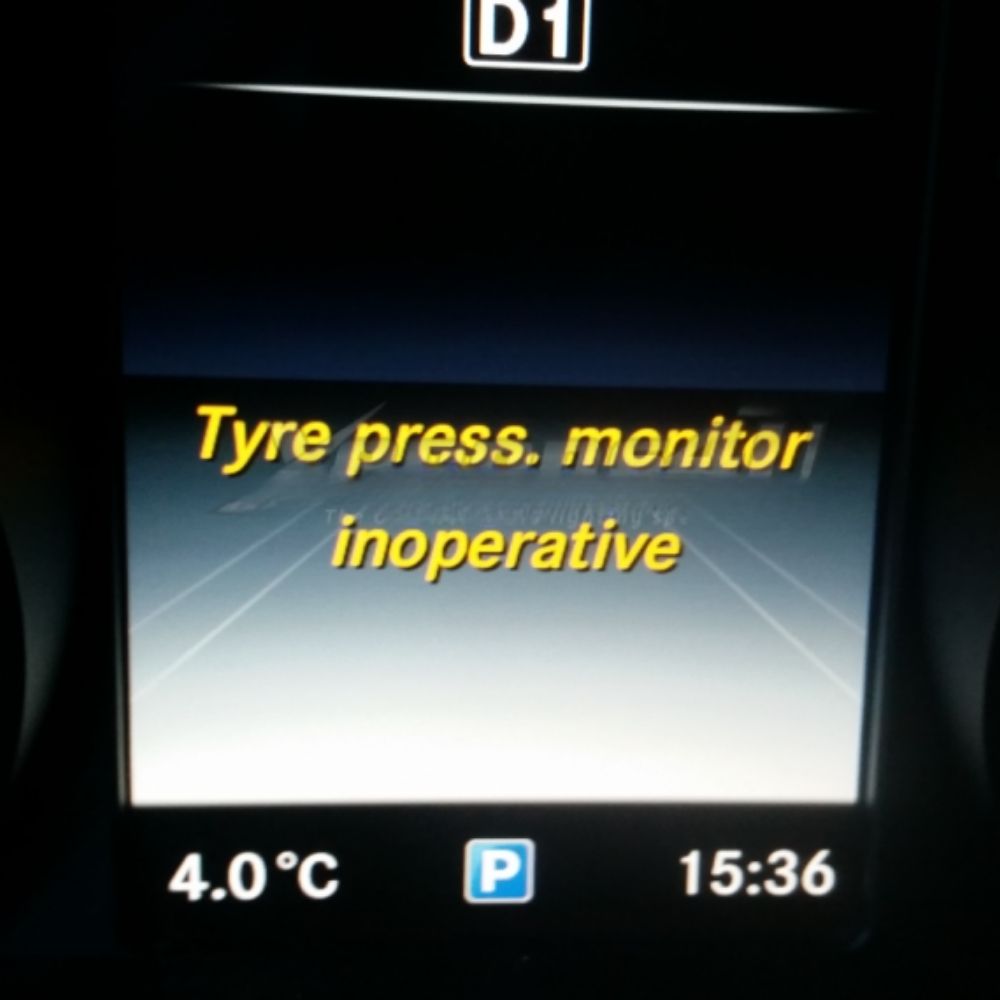
How do you fix a Tire Pressure Monitor Inoperative Mercedes
